These creatures are known to cause significant damage to a variety of plants, turning a once vibrant garden into a landscape of half-eaten leaves and stems.
Pruning Kangaroo Paws Made Easy: Essential Tips and Techniques
Welcome to our comprehensive guide on pruning kangaroo paws, a task that’s often overlooked in maintaining these unique Australian native plants. Kangaroo paws, belonging to the Anigozanthos genus, are renowned for their distinctive flowers that resemble the shape of a kangaroo’s paw – hence their common name.
Proper pruning promotes abundant flowering, as well as helping your kangaroo paws looking vibrant and healthy. In this article, we’ll delve into the specifics of how to prune your kangaroo paws, including dead heading, pruning the foliage, and dividing plants that have become too thick.
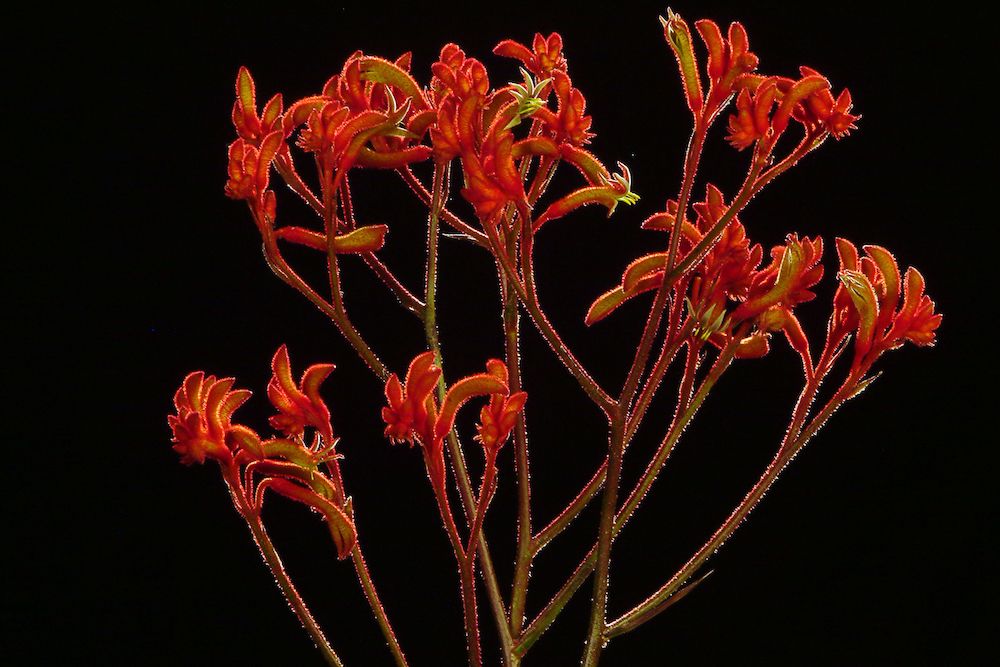
The Unique Characteristics of Kangaroo Paws
Kangaroo paws are a favourite amongst gardeners not just for their striking aesthetics, but also for their hardiness. Originating from the southwest regions of Australia, these plants are well-adapted to sandy soils and Mediterranean climates. They exhibit a fascinating growth pattern, with elongated, strap-like leaves that arise from rhizomes (stems) and a robust root system.
In spring and summer, stalks shoot up to display their iconic tubular flowers which feed a wide range of insects, birds and mammals.
5 Ways of Pruning Kangaroo Paws
There are four main ways to prune kangaroo paws:
- Pruning Flowers for Display: Kangaroo flower heads look amazing in the garden, but they can also look incredible in a vase inside your home as part of a floral bouquet, or by themselves as pictured above.
- Dead Heading: Once their flowers have died, you can prune the flower stalks back to the rhizome. This gets rid of unsightly “dead” stalk heads and encourages the plant to push out additional blooms.
- Dead Foliage Removal: You can prune dead foliage at the base of the plant on the rhizome, or alternatively pull them off by hand. This is another way to freshen up the appearance of your kangaroo paws.
- Dome Pruning: You can trim the living foliage into a dome. This isn’t necessary, and in fact it slightly hinders the plant’s ability to photosynthesise, however some gardeners prefer the “neat and tidy” look as opposed to the wild beauty of their natural strappy habit.
- Division: You can split larger clumps apart to “divide” the rhizomes and root system. This is essentially “propagation by cutting,” and involves separating separate stems (with roots) using a shovel, trowel, or simply by hand if the plants are in a pot. You can then choose to propagate the “pups” (separated rhizomes) into a new part of the garden.
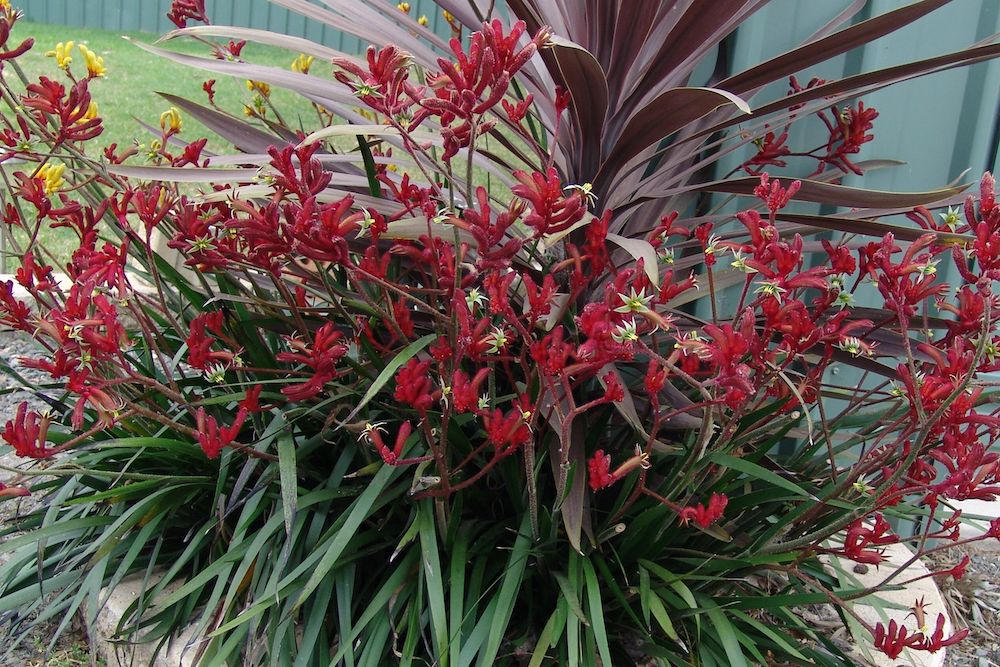
If plants hold plant breeder’s rights (PBR), they can’t be grown for sale. They’re only for your own use. Nurseries often grow these from tissue culture. Sometimes, it’s simpler or saves time to buy fresh plants.
Recognising Signs That Your Kangaroo Paw Needs Pruning
Knowing when to prune is as important as knowing how to prune a kangaroo paw. Here are some signs that your plant may need pruning:
- Healthy Plants: First of all, your plants shouldn’t be struggling before you prune. Unless you’re only cutting out dead material, each cut puts a small amount of stress on your plant. Make sure they’ve received water recently and aren’t thirsty. Also keep in mind that any diseases present are likely to be transmitted on your pruners between plants.
- Spent Flower Stalks: Once the flowers have faded and dried out, it’s time to prune them to stimulate new blooms.
- Untidy foliage: Once you’ve started pruning kangaroo foliage into a dome, the new naturally-shaped leaves can look untidy. You’ll need to continuously prune them into a dome to keep them looking neat and tidy – or, alternatively, prune all of the leaves back close to the rhizome in spring and let the plant regrow into its natural shape again.
- Dead foliage: As new leaves grow on your kangaroo paw, older leaves at the base will start to die. There’s nothing wrong with these dead leaves, but the plant looks better if you can remove these dead leaves. You can also encourage additional airflow which will discourage fungal pathogens from taking hold.
- Overcrowded Clumps: As your kangaroo paws mature, they may become overgrown or spread to parts of the garden you don’t want them. When this happens, you can remove certain rhizomes from the edge or the middle of the clump.
Regular inspection of your kangaroo paws can help you spot these signs early and take necessary action.
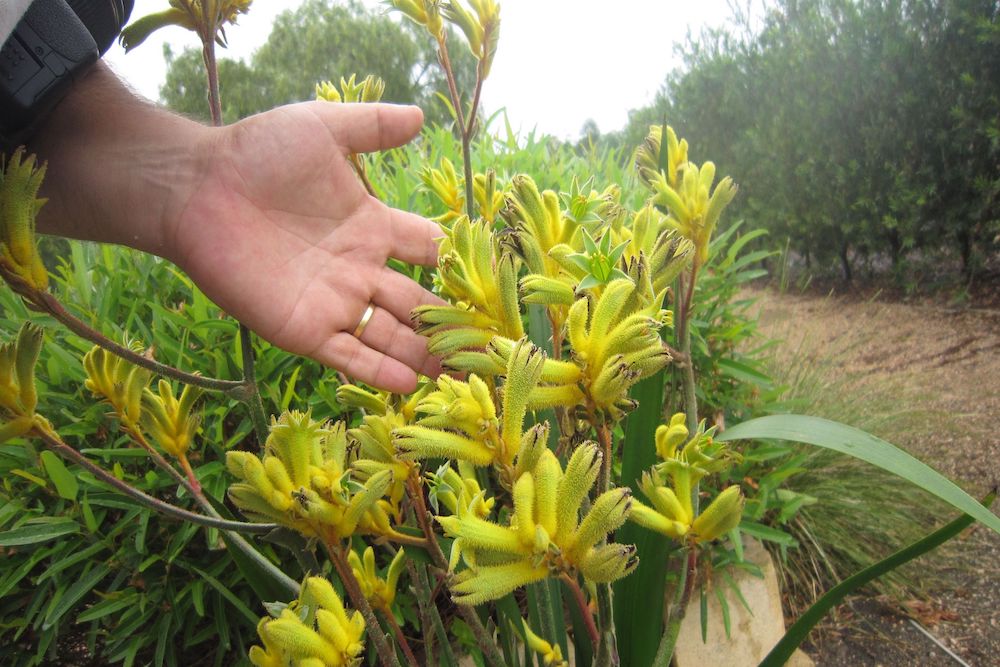
Tools Needed for Pruning Kangaroo Paws
Before you start pruning, you need to prepare the necessary tools:
- Pruning Shears or Secateurs: Choose a pair with sharp blades for clean cuts. Secateurs are used for dead heading spent flower stalks, while either shears or secateurs are good for pruning foliage.
- Shovel, Mattock, Hori Knife or Trowel: These can all be used to divide rhizomes and roots.
- Leather Gardening Gloves: A sturdy pair of gardening gloves will help protect your hands from any hypodermic needles that thoughtless passers-by have thrown into the plant. This is shockingly common, especially on nature strips. Keep in mind that they aren’t actually needle-proof, only needle-resistant, so stay vigilant.
- Rubbing Alcohol or Bleach Solution: These are used for sterilising your tools before and after use.
Maintaining your tools is more important than most gardeners realise. Ensure they stay sharp; blunt blades can lead to jagged cuts, making your plants look ugly and leaving them more susceptible to diseases.
Regularly cleaning and sterilising your shears with rubbing alcohol or a bleach solution can prevent the transmission of diseases between plants.
The Ideal Time for Pruning Kangaroo Paws
Timing your pruning depends on the type of pruning you’re performing. Pruning your dead heads can be done immediately after the flowers die, or whenever you get around to doing it. The same goes for dead foliage: whenever you see dead leaves, they can be cut or pulled carefully off the rhizome. This type of pruning doesn’t stress your plant.
Pruning the foliage can be done at any time of the year, but avoid doing so during a particularly hot or dry day as the fresh wounds will release precious moisture from the plant’s internal system before it has a chance to seal them off. Dividing rhizomes can stress kangaroo plants because it disturbs the root zone. Again, avoid doing this during a particularly hot or dry day, or when your plants are thirsty.
The best time to divide kangaroo plants is late winter to early spring, especially if you’re planning to install the pups into the garden elsewhere. This will give them enough time in the growing season to establish a proper root system.
Post-Pruning Care for Kangaroo Paws
Pruning is only one part of the care regimen for kangaroo paws. Once you’ve pruned your plants, they’ll need some attention to recover and grow back stronger.
Watering: Make sure your kangaroo paws continue receiving the right amount of water. This helps the plant recover from the stress of pruning and encourages new growth. However, avoid overwatering as this can lead to root rot. The soil should be kept moist but not waterlogged.
Fertilising: A slow-release fertiliser applied after pruning can provide the necessary nutrients for recovery and growth. Choose a fertiliser specifically designed for native Australian plants to ensure it has the correct nutrient balance for kangaroo paws. Don’t overdo it, though – too much fertiliser can cause nutrient burn. With that being said, most kangaroo paws aren’t particularly sensitive to too much phosphorous (except for the black kangaroo paw), so a regular fertiliser is usually preferable over a “native” fertiliser.
Monitoring for Disease or Pests: After pruning, keep a close eye on your kangaroo paws for any signs of disease or pests. If you notice any discolouration, wilting, or unusual insect activity, take action immediately.
You don’t need to prune the leaves! These mixed velvet kangaroo paws bred by Ozbreed look amazing with their natural shape. Simply remove dead heads after the flowers are spent. Browse the full range here
Daniel’s Wrap
In this article, we’ve covered the basic tips and techniques on how to prune kangaroo paw. We’ve also discussed the importance of post-pruning care, including watering, fertilising, and disease monitoring.
Correct pruning techniques are vital for maintaining healthy and attractive kangaroo paws. Whether you’re dealing with common kangaroo paw or the unique black flowering variety, these tips can help you keep your plants in top shape.

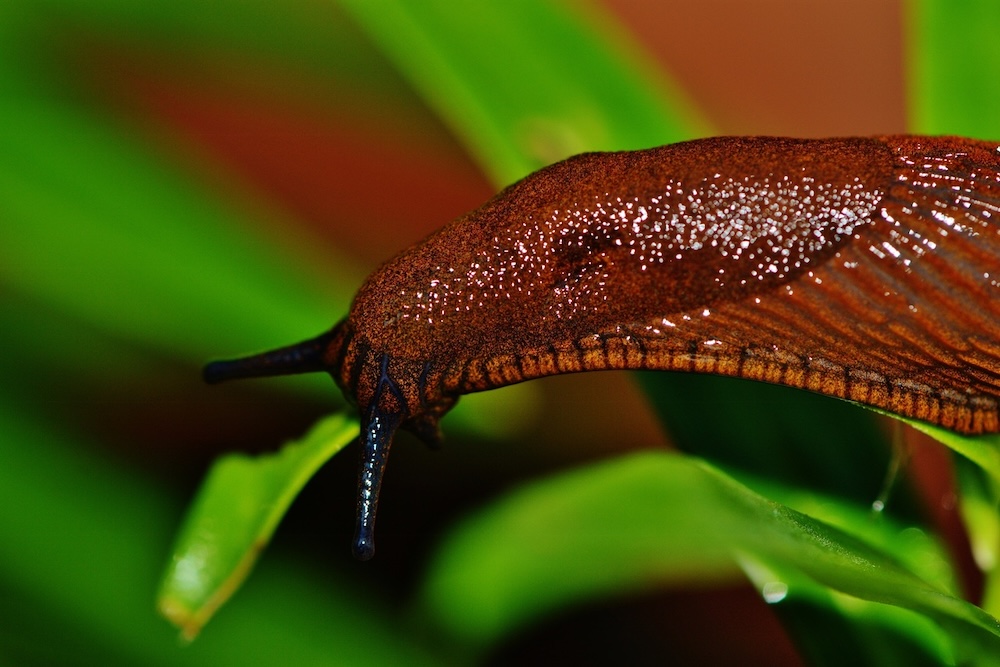
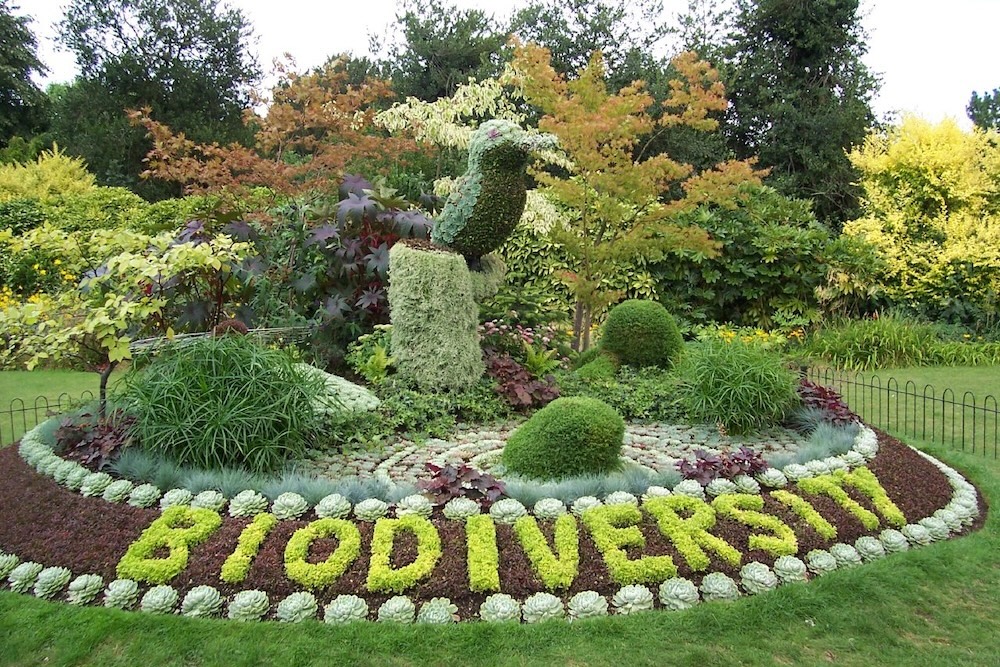
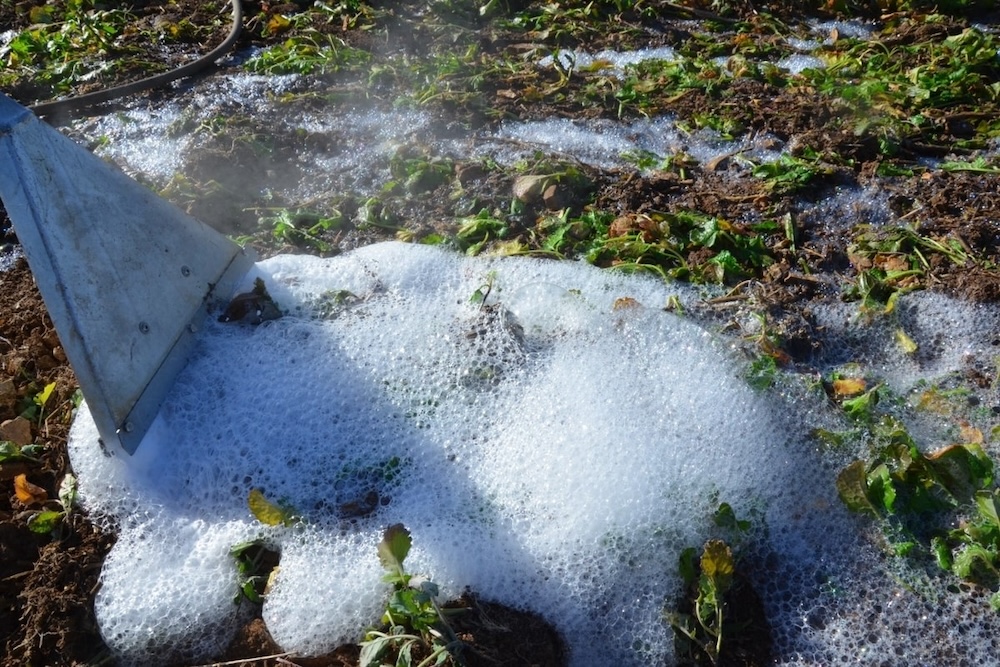
This Post Has 0 Comments